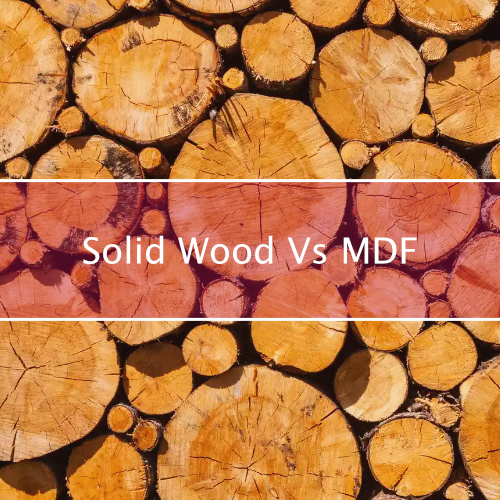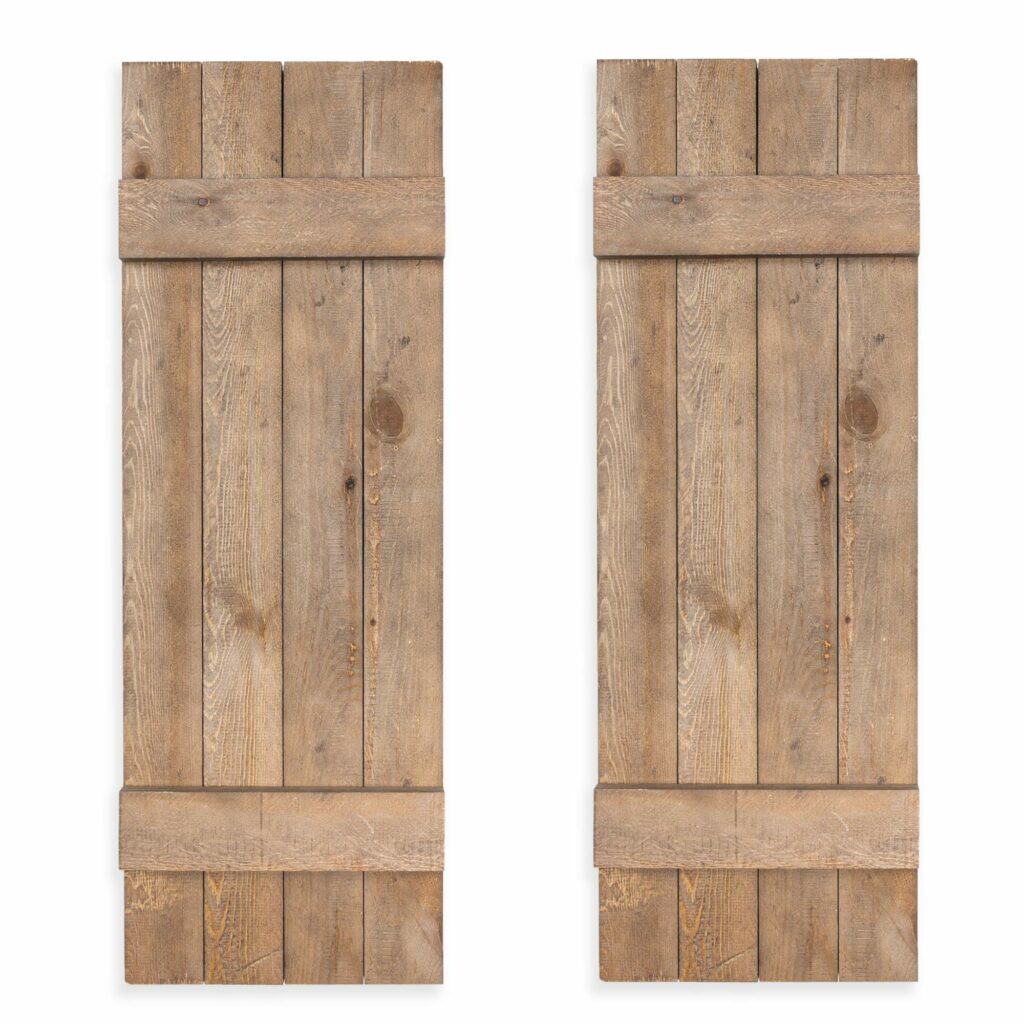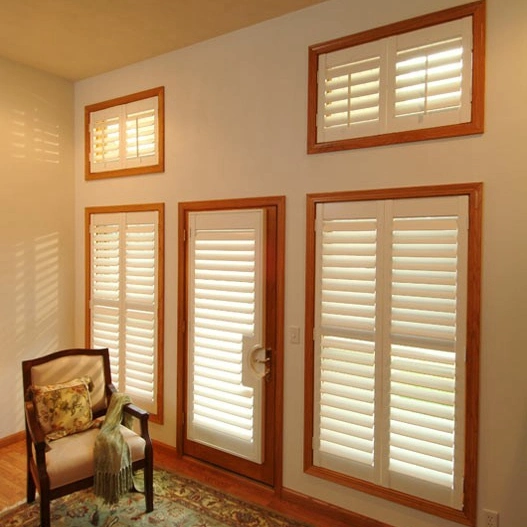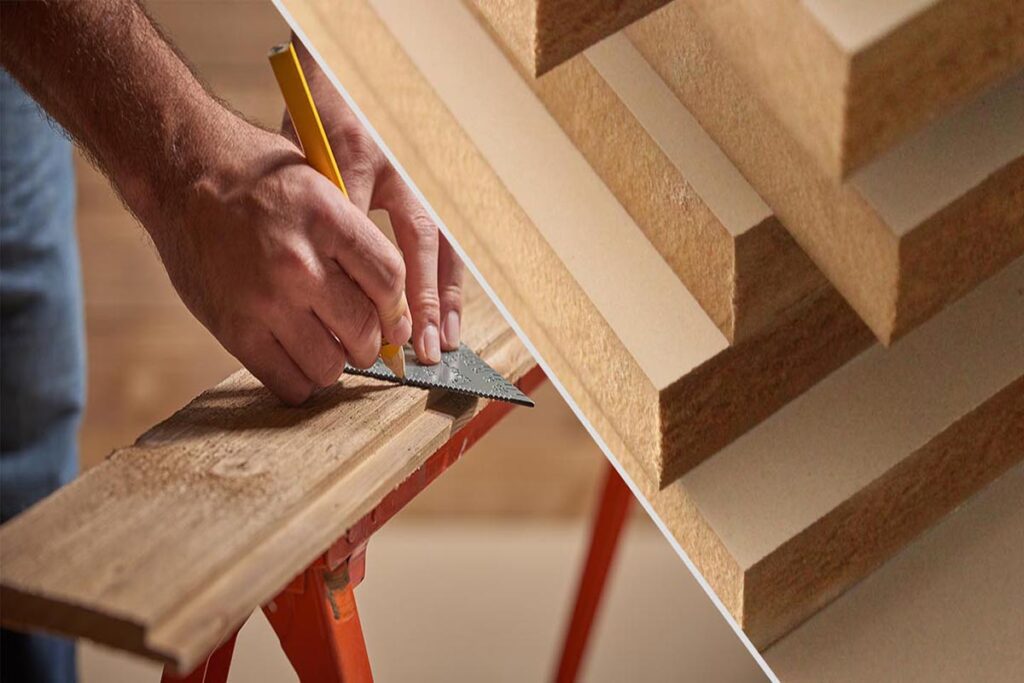
Window shutters have graced homes for centuries. They offer a timeless blend of elegance, practicality, and privacy. For centuries, wood shutters reigned supreme as the window treatment of choice. The rise of modern materials like MDF Shutters (Medium-Density Fibreboard) has shaken things up. This in-depth exploration delves into the intricacies of both materials.
In this article, we’ll guide you towards the perfect shutter solution for your needs.
Wood Shutters: Strength, Beauty, and Investment

Solid wood shutters exude an undeniable charm. Their natural beauty is evident in the rich wood grain patterns. They add warmth and character to any space. But beyond aesthetics, wood offers several practical advantages:
Durability:
When properly cared for, well-crafted wood shutters can grace your windows for decades. Their inherent strength makes them resistant to warping and bending. Even in high-humidity environments like kitchens and bathrooms, wood shutters are ideal. Popular choices like poplar and basswood are known for their excellent stability, making them a reliable option. Discerning homeowners seeking top-tier durability can opt for premium hardwoods. Hardwoods like mahogany are famous for their exceptional resilience.
Style:
Wood shutters boast remarkable versatility when it comes to design. Choose from a variety of wood types, each with its own unique grain pattern and color. For a natural look, stain enhances the wood’s inherent tones. If you crave color, paint unlocks a whole spectrum of customization. Their wide range of design options allows these shutters to complement any style. You have the freedom to choose from classic elegance to modern minimalism. This flexibility ensures a seamless blend with your existing décor.
Investment Value:
High-quality wood shutters are more than just window treatments. They’re an investment in your home. Their timeless appeal and long lifespan can significantly enhance your property’s resale value. Potential buyers recognize the value proposition of premium shutters. They appreciate the added beauty, functionality, and insulation they provide.
However, wood shutters also come with considerations that demand careful thought:
Cost Factor:
Solid wood is a premium material, and the price tag reflects that. The cost of shutters is influenced by several factors. These include the wood type chosen, the complexity of the design, and the overall size of the shutters. Poplar and basswood are more budget-friendly options for wood. However, exotic hardwoods can significantly increase the cost of a project.
Maintenance Needs:
Wood shutters demand regular care to maintain their stunning appearance. This includes dusting them often and wiping them down with a damp cloth periodically. The type of finish applied will determine how often you need to refinish. For optimal protection and aesthetics, you might need to refinish the surface. You can do this with sealant or paint and apply every few years.
Weight Considerations:
The inherent strength of wood comes with a trade-off: weight. Solid wood shutters can be quite heavy, especially for larger windows. This can make installation more challenging. It Might require additional support for oversized windows. Additionally, the weight factor needs to be considered. In homes with young children or pets, this is important for safety reasons.
MDF Shutters: Affordability and Convenience

MDF shutters present a compelling alternative to wood, particularly for budget-conscious homeowners. Here’s what makes them a popular choice:
Cost-Effectiveness:
MDF is a manufactured wood product that’s significantly cheaper than solid wood. Want stylish shutters for your windows? This is a great choice because it looks good and won’t cost too much money. These windows are budget-friendly! That means you can update many windows in your house without spending too much money.
Low-Maintenance Appeal:
MDF shutters are a great choice for windows. They come with a smooth, painted finish that is very easy to clean. Unlike wood, they don’t require regular refinishing. A simple wipe-down with a damp cloth keeps them looking their best, saving you time and effort. Easy care is a big plus! This means busy homeowners won’t have to spend a lot of time cleaning or fixing things.
Lightweight Advantage:
Solid wood shutters are heavy, but MDF shutters are much lighter. This is because MDF is a type of wood composite. This makes them easier to install and operate, particularly for larger windows. Lighter shutters are also easier to handle, which is important in homes with children or pets. Little hands might grab the window covers. Lighter covers are easier to open and won’t hurt anyone if they fall.
Understanding the limitations of MDF shutters before making a decision:
Moisture Susceptibility:
MDF is more susceptible to moisture damage compared to wood. Over time, exposure to high humidity can cause warping or swelling of the material. They are not a good choice for wet places like bathrooms and kitchens. These rooms have more moisture in the air.
Limited Design Options:
The design flexibility of MDF shutters is somewhat limited compared to wood. They typically come in a painted finish with fewer customization options. Solid wood shutters have a beautiful look. This is because of the natural wood grain patterns. These patterns add depth and character to the shutters.
Lifespan Considerations:
MDF shutters are tough and can last a long time, but they usually won’t last as long as well-made wood shutters. Solid wood shutters can last a long time and become family treasures if you take care of them. MDF shutters are a good choice. But, like any window covering, they may need to be replaced in the future. This can happen if they get wet or are used for a long time.
Going Beyond the Basics: Unpacking Additional Factors
Choosing between wood and MDF shutters goes beyond just the core material. Here’s a deeper dive into additional considerations to ensure an informed decision:
Wood Shutter Options:
The world of wood offers a variety of options, each with its own advantages:
Poplar:
A popular choice due to its affordability and lightweight nature. IIt creates a good base for the paint color. However, don’t use this paint in bathrooms or laundry rooms. These rooms get too steamy for this type of paint.
Basswood:
Basswood is a special type of wood. It is known for being very smooth, and the paint sticks to it really well. This makes it a great choice for people who want their project to look perfect after they paint it. Its moderate density makes it a good balance between weight and durability.
Hardwoods:
Do you want something that lasts a long time and looks fancy? Hardwood floors, like mahogany or walnut, are a great choice! These woods are beautiful and have lovely natural grain. These woods can also handle water and weather very well. However, they come at a premium price.
Painting vs. Staining: The finishing touch is important. It makes things look nice and helps them last longer. Here’s a breakdown of the two main options:
Painting:
You can pick any color you want for your shutters. This way, they will look great next to your furniture and other decorations. Paint can hide the wood grain. This might cover up the pretty wood underneath.
Staining:
This choice shows off the beautiful lines of real wood, making your room feel cozy and special. You can color wood with stain, but stain doesn’t come in as many colors as paint. Do you want the wood to look natural, or do you want to paint it a certain color? This will help you decide what to do next.
MDF Shutters
The quality of MDF matters:
MDF boards come in varying grades. Higher-density MDF offers superior moisture resistance and overall durability compared to lower-density options. Regular MDF boards can soak up water easily, so a higher-grade MDF board is better in wet places.
Exploring Alternatives:
There are different types of wood for building things, like composite shutters. These are a good choice because they are not too expensive like real wood, but they are stronger than MDF. These shutters are made with tiny bits of wood mixed together with resin. This makes them better at handling wet places than regular MDF. Some composite shutters look even more beautiful because they have a grain texture. This texture makes them a more attractive choice for windows.
Special Features and Customization Options:

You can pick the material your shutters will be made of. But that’s not all! You can also choose from many features and styles to get shutters that are perfect for you.
Louver Size and Style:
Shutters come with louvers (slats) in various sizes. Wider louvers offer greater light control but might appear bulky on smaller windows. Thin blinds called louvers can make a window look traditional. You can also use them to control the light in smaller amounts. There are different louver styles to choose from. You can pick fixed louvers, adjustable louvers, or even hidden-tilt louvers. Hidden-tilt louvers give a clean look.
Shutters come in various panel configurations, impacting both functionality and aesthetics. Popular options include:
Full Panels:
These solid panels offer complete privacy and light blockage.
Raised Panels:
These panels feature a central section that sits higher than the frame. This section adds a visual interest and a touch of elegance.
Louvered Panels within a Raised Frame:
You can have privacy with blinds while also having a beautiful raised design on your window. This combines the good things about louvers and raised panels.
Hardware:
Look for high-quality hinges and operating mechanisms. Choose designs made from durable materials like stainless steel. Consider hidden-mount options for a cleaner, more streamlined look. The smooth and reliable operation ensures long-lasting functionality and user satisfaction.
Installation and Upkeep Tips:
Professional Installation Matters:
While some shutter types might be suitable for DIY installation, especially for smaller windows, professional installation by experienced personnel offers several advantages:
Ensures Proper Alignment:
Professionals ensure your shutters are perfectly aligned and level, creating a visually appealing and functionally sound window treatment.
Optimizes Functionality:
Proper installation ensures the louvers operate smoothly and efficiently, maximizing light control and privacy benefits.
Guarantees Longevity:
Professional installation techniques minimize the risk of damage during the installation process, ensuring your shutters last for years to come.
Cleaning and Maintenance: Regardless of material, regular cleaning is essential to maintain the beauty and functionality of your shutters. Here are some general guidelines:
Dusting:
Regularly dust your shutters with a soft microfiber cloth to remove dust and cobwebs.
Damp-Cloth Cleaning:
Wipe down your shutters with a damp cloth to remove any accumulated dirt or grime. Avoid using harsh chemicals or abrasive cleaners, as they can damage the finish.
Wood Shutter Refinishing:
The natural beauty of wood shutters requires periodic maintenance to retain their luster and functionality. The refinishing process involves refreshing the protective layer on your shutters, typically a sealant or paint. The frequency of refinishing depends on several factors:
Type of Finish:
Different finishes have varying lifespans. Generally, high-quality paints offer longer protection compared to stains. Manufacturers often provide estimated timeframes for refinishing based on the specific finish applied.
Environmental Conditions:
Exposure to harsh sunlight, high humidity, and extreme temperatures can accelerate the deterioration of the finish. Shutters in direct sunlight might require more frequent refinishing than those in shaded areas.
Usage and Maintenance:
Regular dusting and occasional cleaning with a damp cloth help maintain the finish. However, neglecting these practices can lead to a faster breakdown of the protective layer, necessitating refinishing sooner.
General Guideline for Refinishing Wood Shutters:
High-Quality Paint:
A well-applied, high-quality paint job should last 5 to 10 years. The lifespan heavily depends on the factors mentioned above. Regular cleaning and minimal sun exposure can extend this timeframe.
Stains:
Stains typically require more frequent refinishing compared to paint, with a range of 3 to 5 years being common. This is because stains offer less protection against the elements.
Signs It’s Time to Refinish:
While the timeframe is a helpful starting point, here are some telltale signs that indicate your wood shutters need refinishing:
Fading or Discoloration:
Over time, exposure to sunlight can cause the paint or stain to fade, losing its original vibrancy.
Peeling or Cracking:
As the finish ages, it might start to peel or crack, indicating a breakdown in its protective properties.
Water Damage:
Moisture exposure can cause the wood to warp or the finish to blister. Left untreated, this can lead to more extensive damage.
Loss of Sheen:
A dull or cloudy appearance on your painted shutters suggests the finish is deteriorating and needs refreshing.
The Refinishing Process
Refinishing wood shutters can be a DIY project for experienced homeowners. But, for a flawless finish and guaranteed results, we recommend consulting a professional.
Here’s a simplified breakdown of the refinishing process:
Preparation:
This involves removing the shutters from the window, thoroughly cleaning them with a degreaser, and sanding them lightly to remove any loose paint or imperfections.
Repairs:
Any minor cracks or imperfections in the wood need to be addressed using appropriate wood filler and sanding smooth.
Priming:
A fresh coat of primer ensures better paint adhesion and a more even finish for painted shutters.
Painting or Staining:
Apply the chosen paint or stain according to the manufacturer’s instructions. Use multiple thin coats for optimal coverage and durability.
Sealing:
Once the paint or stain dries completely, apply a clear sealant for added protection against moisture and UV damage. This final step helps extend the finish’s lifespan.
Choosing the Right Refinishing Products:
Oil-Based vs. Water-Based Paints:
Oil-based paints offer superior durability, but they require more ventilation and cleaning time with solvents. Water-based paints are more eco-friendly and easier to clean, but they might not be as durable as oil-based options. Consult with a professional to determine the most suitable paint for your shutters.
Stain Choice:
Choose a stain that complements the natural wood tones and your overall décor. Be mindful of the stain’s level of transparency. Some stains are highly transparent. These paints highlight the wood grain, while others offer more color coverage.
Conclusion:
Wood shutters are a timeless investment. These shutters add beauty, functionality, and value to your home. Take care of them and refinish them sometimes. They will look beautiful in your windows for decades to come. By understanding the factors influencing the refinishing frequency and the refinishing process itself, you can ensure your wood shutters continue to be a source of pride and enjoyment for years to follow.
This in-depth exploration of both wood and MDF shutters, along with the additional considerations and maintenance tips, empowers you to make an informed decision. Whether you prioritize timeless beauty and long-lasting durability or affordability and low-maintenance convenience, you can find the perfect shutter solution to elevate your home’s style and functionality.
